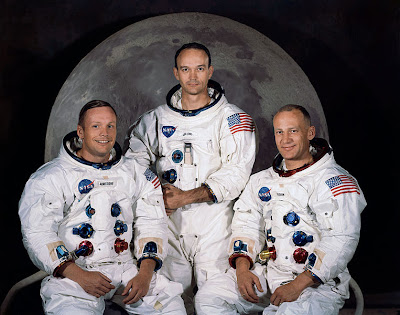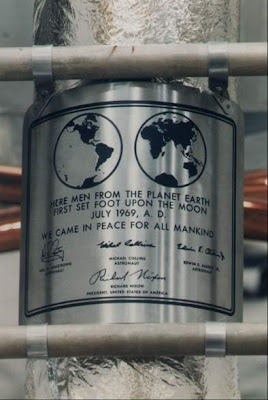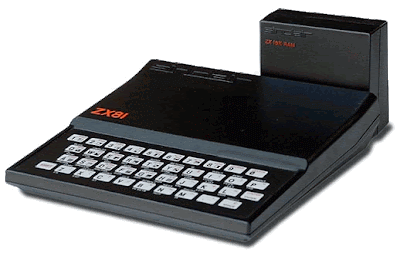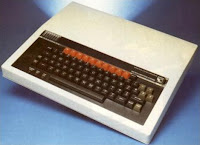Posts Tagged ‘Nostalgia’
 Waxing nostalgic
Waxing nostalgic
43 years ago, this week, I was a 12 year old geek (of course) in love with the United State’s Manned Spaceflight program. Some of my earliest TV memories were of watching the Mercury launches of Alan Shepard and John Glenn.
43 years ago, this week, the epitome, the apex, the goal was reached. On Wednesday, July 16th we watched as Apollo 11 was launched from Pad 39A from Cape Kennedy.
Three days later, on July 20th, we listened (breathlessly) and Neil Armstrong broadcast, “Houston, Tranquility Base here, the Eagle has landed”. As kids we were ready to go to bed as the EVA (moon walk) was scheduled for the next day. But Neil Armstrong and Buzz Aldrin must have been on an adrenalin high, however, as they asked Houston for permission (and received it) to begin the moonwalk within hours of landing. Our parents suspended bed time rules and allowed my sister and I to stay up and watch all the history being made.
And watch, we did! We watched the TV spellbound as ghostly images appeared on our screens. Walter Cronkite and Wally Schirra were our guides as Neil Armstrong uttered those now famous words, “That’s one small step for man, one giant leap for mankind”. I specifically remember the cameras cutting to Walter Cronkite as events unfolded. He understood the significance of the moment and was almost in tears.
Looking back on it, the accomplishment is even more amazing! The Lunar Module landed on the moon with an on board computer that had less processing power than a scientific calculator or cell phone of today’s vintage. Those were the days when the sky was the limit, we had the national will to do great things and the horizon looked endless. I miss the enthusiasm, the attitude and the ambition of those heady days.
To this day, when I find myself outdoors at night and the moon is out – I still look up there and think to myself, “Wow! We actually went there!”.
72 de Larry W2LJ
QRP – When you care to send the very least!
 Happy birthday, ZX81
Happy birthday, ZX81
Thirty years ago today the Sinclair ZX81 was introduced to the world. The world’s first affordable personal computer, it wasn’t in fact the first home computer I had owned. That had been a Nascom 1, a Zilog Z80 based machine with just 1Kb of RAM, which I built from a kit – all 1,400 soldered joints of it, using the same Antex soldering iron I still use today.
The ZX81 was also offered as a kit as well as a ready built version, so naturally I ordered the kit. I seem to remember it cost £49 – much less than the Nascom. I don’t remember how many soldered joints there were, but there were only four main chips. It was a much easier project to build. The ZX81 also came with just 1Kb of RAM. But unlike the Nascom, it had a built-in BASIC interpreter so you could still do more with that 1Kb and you didn’t have to program it in assembly code.
Innovative design was used to cut the cost of the ZX81. For example, instead of a dedicated display processor the Z80 CPU generated the display. Whenever your program executed, the screen went blank. The screen was an ordinary black and white TV. Programs were loaded and saved using a cheap cassette recorder. That was read and written by the CPU too, which generated wild patterns on the screen while it neglected its display duties. The keyboard was a plastic membrane type. It was horrible to type on.
Later I upgraded the memory to 48Kb using a third party RAM pack (the standard RAM pack sold by Sinclair was only 16Kb.) This, too was built from a kit. Like the Sinclair one, it fixed to the rear of the machine using an edge connector, with no other fixing. Every ZX81 owner is familiar with the term “wobbly RAM pack”. One accidental jolt could interrupt the connection and crash the computer losing all your work. Ah, those were the days!
As a radio ham, I naturally was interested in writing ham radio software for the ZX81. I wrote several programs including a morse tutor, which used a machine code routine for sending the actual code. I think I have written morse tutors for every type of computer I have owned – it’s amazing that I am still so bad at reading the code! An article describing the morse tutor and a memory keyer for the ZX81 was published in Short Wave Magazine and was one of my first published articles.
I can still remember the excitement of home computing in those early days. Today’s PCs, vastly more powerful and capable though they are, just aren’t as interesting. Back then, home computing was very much a hobbyist’s game. We were pioneers. Now everyone and his granny has a computer, and programming has become more or less a job for professionals. I do miss those old days!
Thank you, Clive Sinclair, for bringing us these wonderful toys. Happy 30th birthday, ZX81!
 A new use for old technology
A new use for old technology
The National Museum of Computing at Bletchley Park has found a use for 30-year-old BBC Micros – teaching students how to write programs. One ICT teacher said: “The computing A-level is about how computers work, but if you ask anyone how it works they will not be able to tell you. Modern computers go too fast. You can see the instructions happening for real with these machines. They need to have that understanding for the A-level.”
I often think back wistfully to the days of programming early microcomputers where each instruction or subroutine you wrote had a direct effect on the hardware. Even the way things appeared on the screen were a direct result of my own coding. Today, Windows manages all input and output and actually prevents the programmer from directly accessing the hardware. In modern programming you never see a machine instruction. It’s all done using high-level language commands to set the properties of “objects” – software “black boxes” that simplify and speed up complex programming tasks but hide the mechanics of their operation. You couldn’t write modern software the old way, but I still miss the simplicity of early computing.
I have pretty similar reasons for being concerned at what developments like SDR and D-Star will do to the ham radio hobby. The technology is so complex that the average amateur will have no understanding of how they work, only how to use them. I miss the days when you could open a schematic and follow the path of a signal from one end to the other.
Of course, you can still buy kits to build simple radios. I hope that there will always be a place in our hobby for simple, analogue radios that the average amateur can understand, and I don’t mean just in a museum.
 CQ2
CQ2
Martin, G8JNJ, sent me an email with some suggestions for getting the super-regenerative Fredbox receiver to work. He also sent me a link to the blog of Steve, G4AQB, which mentions the Practical Wireless CQ2 receiver design on which the Fredbox receiver is supposed to be based. I remember the name “CQ2” and the picture on the magazine front cover and circuit diagram shown on Steve’s site look similar to the receiver I built in the early 70s to listen to the 2 metre band which finally gave me the interest to get my Class B (144MHz and up) amateur radio license. I seem to recall that the article also had detailed drawings of how the components in the receiver were to be laid out.
 Steve writes that he mounted the receiver on an aluminium front panel but that this played havoc with the tuned circuit so he rebuilt it on a piece of plywood! My memory is pretty poor these days but my recollection is that I built it into an aluminium box of the sort that you could readily buy from the local radio parts shop (those were the days when there were local radio parts shops!), like a box with a lid secured with two self tapping screws. The box stood on its side so the lid was the front panel of the receiver.
Steve writes that he mounted the receiver on an aluminium front panel but that this played havoc with the tuned circuit so he rebuilt it on a piece of plywood! My memory is pretty poor these days but my recollection is that I built it into an aluminium box of the sort that you could readily buy from the local radio parts shop (those were the days when there were local radio parts shops!), like a box with a lid secured with two self tapping screws. The box stood on its side so the lid was the front panel of the receiver.
Steve writes that he built a quad antenna to use with the receiver. My antenna was a dipole mounted on a wooden stand in my bedroom and fed with a few feet of audio co-ax, since at the time I was ignorant of coaxial cable properties like impedance or loss! In those days I lived with my parents in Rayleigh, Essex. I was able to receive the local police on the CQ2 receiver, as well as amateurs in the Southend area such as Barry G8HNX, John G8IDI and Chas G8HVS. I could receive the GB3VHF beacon from Wrotham, Kent, and also a couple of old-timers who had a regular sked: G6LL whom I think was in Hertfordshire and G5OX who may have been in Ashford, Kent (or perhaps it was the other way round.) This was nearly 40 years ago and I’m surprised I can still remember any of it!
Steve also writes that the radiation from the super-regenerative receiver wiped out the local TVs. I don’t remember that, fortunately, or an end may have been put to my aspirations to be a radio ham before they even started!
But my first proper transceiver – a Hudson AM108 ex-taxi radio that I bought for £5 at the RSGB Woburn Rally in 1973 (which was actually before I was licensed) caused patterning on my parents’ TV on receive! After I got my license I soon found that it caused serious breakthrough on my father’s stereo hi-fi on transmit as well, so my operating was done mobile /M from the car after that.
Later I built my own 4-channel 2m FM transmitter (using tubes, to another PW design) which I used in conjunction with a Microwave Modules receive converter and my short wave receiver (also home built, using tubes, from a PW design.)
So much fun with such primitive equipment! I often wonder if all the technological advances we have today have really added to the enjoyment of the hobby.



















